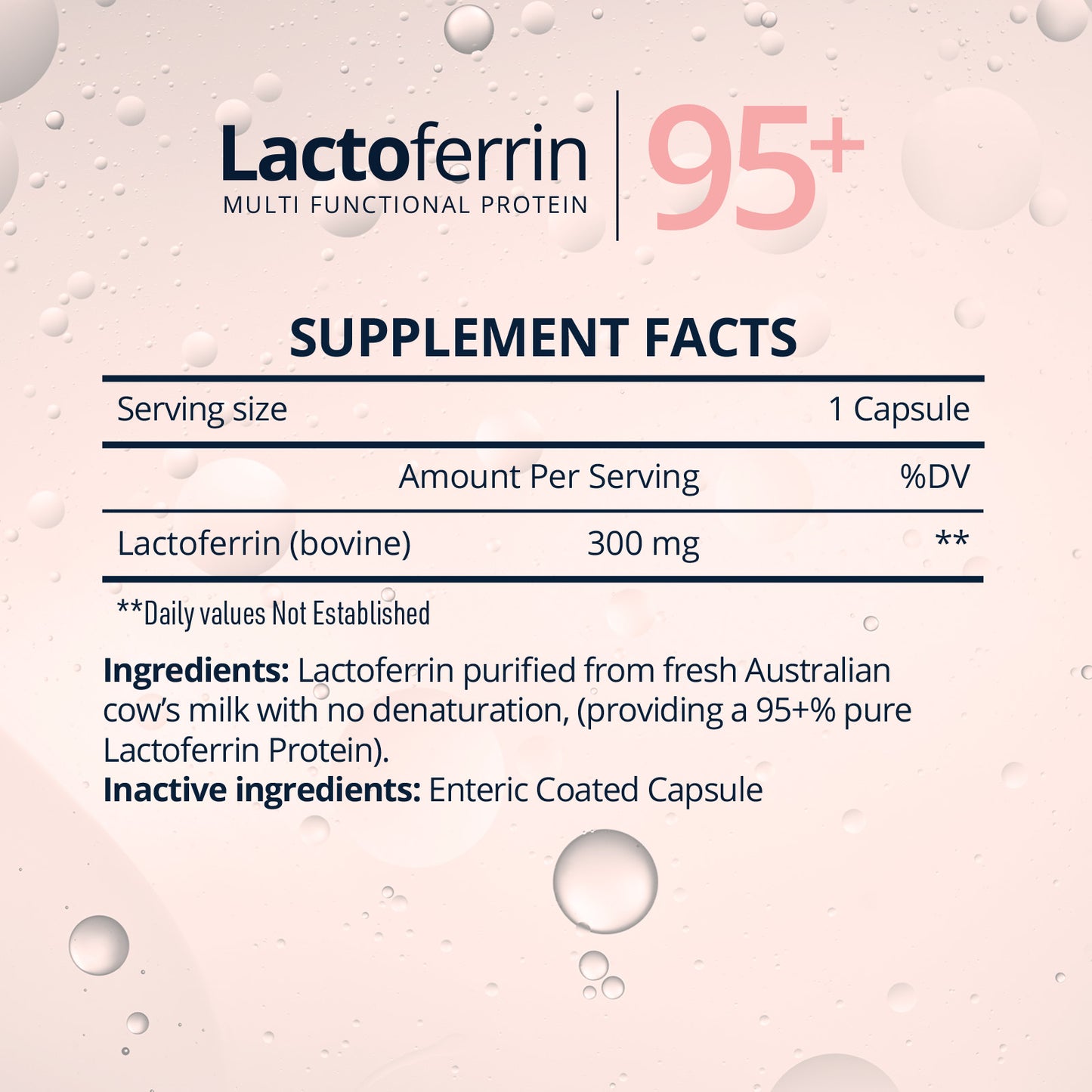In the journey towards achieving optimal health, the significance of proteins, particularly lactoferrin, cannot be overstated. With its multifunctional benefits, lactoferrin presents itself in two main forms: apolactoferrin and native lactoferrin. While both forms are beneficial, a closer look reveals that native lactoferrin may offer a broader spectrum of health advantages, making the "apolactoferrin vs lactoferrin" comparison a crucial consideration for those seeking to enhance their health regimen.
Delving into Lactoferrin's Dual Forms
Lactoferrin is a powerhouse protein found in milk and various secretions, celebrated for its iron-binding ability, which plays a pivotal role in antimicrobial defense, immune function, and iron regulation. The key difference between apolactoferrin and native lactoferrin lies in their iron-binding status, which dictates their biological activities and health benefits.
Spotlight on Native Lactoferrin
Native lactoferrin, or lactoferrin, is the iron-saturated form of the protein, offering a comprehensive approach to health maintenance. Unlike apolactoferrin, native lactoferrin's iron-bound state contributes to its enhanced role in:
- Iron Regulation: Beyond its shared antimicrobial capabilities, native lactoferrin excels in regulating iron metabolism, crucial for preventing deficiencies and supporting overall health.
- Antioxidative Action: Its iron-binding feature endows native lactoferrin with potent antioxidative properties, offering protection against oxidative stress and promoting cellular health.
- Immune Support: While apolactoferrin is known for its immune-boosting properties, native lactoferrin's comprehensive immune support extends beyond, thanks to its balanced iron regulation and antioxidative benefits.
Apo lactoferrin: The Iron-Free Ally
Apolactoferrin stands out for its pronounced antimicrobial action, stemming from its iron-free nature. This allows it to effectively compete with pathogens for iron, thus enhancing the body's infection defense mechanisms. While beneficial, this singular focus on antimicrobial action positions apolactoferrin as a specialized tool in the health arsenal.
Choosing Between Apolactoferrin and Native Lactoferrin
When contemplating "apolactoferrin vs lactoferrin," it's essential to recognize that the choice is not about superiority but suitability to health goals. Native lactoferrin, with its broad range of benefits from iron regulation to antioxidative protection, offers a more holistic approach to health maintenance and disease prevention.
Embracing Native Lactoferrin for Comprehensive Health Benefits
The exploration of "apolactoferrin vs lactoferrin" highlights native lactoferrin's unique position as a versatile and potent component in health optimization. By providing a balanced array of benefits that extend beyond antimicrobial action to include iron regulation and antioxidative protection, native lactoferrin stands out as a preferred option for those seeking a comprehensive approach to wellness.
This table aims to succinctly capture the unique aspects and advantages of apolactoferrin and native lactoferrin
|
Feature |
Apolactoferrin |
Native Lactoferrin |
|
Iron-Binding Status |
Iron-free |
Iron-bound |
|
Primary Role |
Enhanced antimicrobial activity by depriving pathogens of iron |
Iron regulation in the body, supporting immune function and antioxidant protection |
|
Antimicrobial Action |
High, due to the ability to bind to free iron, making it unavailable to bacteria |
Present, and also includes the ability to regulate iron metabolism, which can indirectly influence pathogen growth |
|
Immune Modulation |
Known for boosting the immune system by influencing various immune pathways |
Similar immune-boosting properties, with added benefits from iron regulation and antioxidant effects |
|
Iron Metabolism |
Does not directly participate in iron transport or metabolism |
Plays a critical role in iron absorption and distribution, helping to prevent iron deficiency |
|
Antioxidant Properties |
Not directly related to its antioxidant properties |
Acts as an antioxidant due to its iron-binding capacity, helping to reduce oxidative stress |
|
Preferred Use |
Ideal in situations where iron modulation is not is not wanted but where antimicrobial and immune-boosting actions are desired |
Suited for conditions preferring iron regulation, alongside benefits of immune- boosting support and antioxidative as well as antimicrobial protection. |







